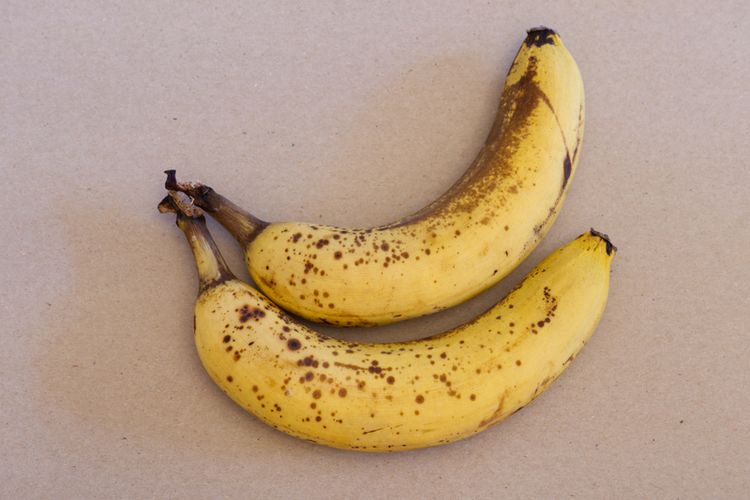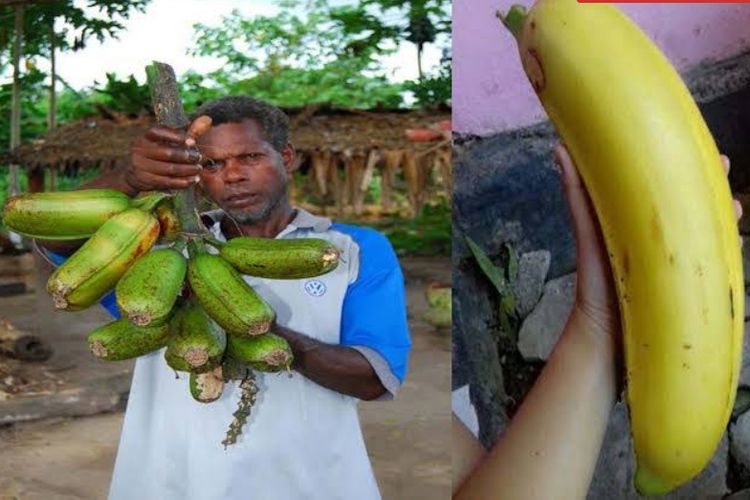Biggest Banana Tree in the World Found in Papua, Indonesia

KOMPAS.com - Indonesia is a land of innumerable wonders, starting with its natural beauty, rich culture, and eclectic food. Speaking of the latter, Indonesia has some of the most striking fruits anywhere, including the largest banana tree in the world.
Characteristics
Most banana trees are usually about three to four meters in length, but these banana trees can be 24 to 30 meters high.
Known by their scientific name Musa ingens or Musa ingens NW Slimmonds, these trees are six to seven times higher than an average banana tree. Their diameter can reach 95 cm, with some websites claiming that its stem can reach one to two meters in diameter.
But for the inhabitants of Banfot villlage in West Papua's Tambrouw Regency, they are known by the less scientific name of ndowin or apit sepoh.
Also read: Belitong Geopark Wins UNESCO Global Geopark Designation
The banana fronds are just as supersized, boasting a length of up to five meters with a width of about one meter. Their size makes them ideal to store harvest products. The banana leaves are used by local residents as roofs of makeshift houses in the forest, or mats to sit and eat.
Like other bananas, the skin is green when unripe and yellowish when ripe. Unlike other bananas that average 13 cm in length and less than three cm in diameter, the giant banana trees can grow up to 20 cm in length and four to six centimeters in diameter.
While an average bunch of bananas can weigh 30 to 50 kilograms, the giant Musa ingens banana bunch can weigh 60 kilograms. Their seeds are also a lot bigger than regular bananas.
Endemic to
 Sarawondori Bay with turquoise water in Yapen Islands Regency, Papua.
Sarawondori Bay with turquoise water in Yapen Islands Regency, Papua.As flora endemic to Papua, the giant bananas found in West Papua's Arfak Mountains Nature Reserve between 100 to 200 meters above sea level. Their range within Papua includes the Manokwari, Kaimana, Wondama Bay, Fak-Fak, Yapen and Tambrauw Regencies.
One of the places to find these bananas is in Kwau Village, Mokwam District, Manokwari Regency. Set around copses of giant banana trees, they are about an hour's drive by car or motorcycle to the Arfak Mountains.
But tourists and professional photographers who want to stay longer can head to the Papua Lorikeet, an inn owned by local man Hans Mandacan. The establishment is built in the middle of the natural forest in Kwau Village.
Also read: CNN Names Indonesia's Soto Ayam Among World's 20 Best Soups
Hans' family lived near the Lorikeet inn, a tin-roofed hut with boarded walls. Several Musa ingens trees stand nearby, ignored by them for the most part.
"We usually do not eat giant bananas. We mostly set them aside for the birds," Hans said to Indonesia.go.id. "These include the 'smart birds'.”
Aside from the giant banans, the forest around Papua Lorikeet include dozens of flowers and shrubs. While the giant bananas are hard to breed since sprouts rarely appear on their tree stumps, birds eat the fruit and seeds and them throughout the Arfak Mountains.
Usually these giant bananas grow in secondary forest on the side of the road in substrate soil. This type of banana can grow in groups or separately, and are commonly associated with Lithocarpus rufovillosus, Musa arfakiana, Musa balbisina and Dodonaea viscos strains.
Known for ages
 Illustration of bananas.
Illustration of bananas.While the giant Musa ingens bananas might seems novelties for most Indonesians, they were actually collected as a specimen by horticulturists JS Womersley and NW Simmonds in December 1954 in Papua New Guinea.
At that time, the banana was stored as a specimen at the English Kew Herbarium.
Jeff Daniels, a researcher from the International Board of Plant Generatic Resources, began researching the giant banana in Indonesia's neighboring country Papua New Guinea in 1989.
According to his research, this giant banana tree can be found in the western and eastern highlands or mountainous areas of Papua New Guinea. Daniels then patented the results of his giant banana research.
Even though Musa ingens is believed to grow in Papua New Guinea, the giant bananas also thrive in West Papua, Indonesia. But wherever one can find them, they are undoubtedly worth every bite.
(Editor: Rachmawati)
Source:
Simak breaking news dan berita pilihan kami langsung di ponselmu. Pilih saluran andalanmu akses berita Kompas.com WhatsApp Channel : https://www.whatsapp.com/channel/0029VaFPbedBPzjZrk13HO3D. Pastikan kamu sudah install aplikasi WhatsApp ya.






























